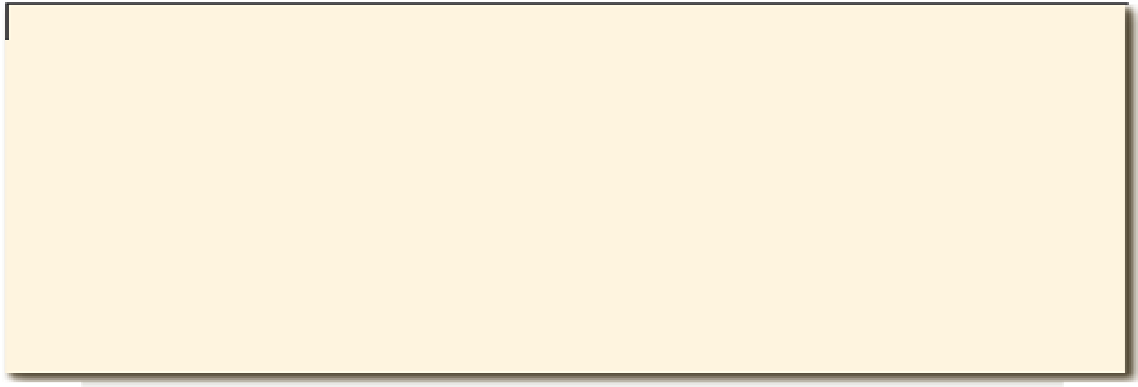Environmental Engineering Reference
In-Depth Information
TABLE 5.1
Enhancement in time of spatial resolution of spaceborne SAR systems.
Sensor class
Sensor/satellite name
Country/
Band
Launch
Finest available
organization
spatial resolution (m)
Medium resolution
ERS-1
ESA
C
1991
30
Medium resolution
ERS-2
ESA
C
1995
30
Medium resolution
ASAR
ESA
C
2002
30
Medium resolution
JERS
Japan
L
1992
18
High resolution
ALOS
Japan
L
2006
7
High resolution
Radarsat - 2
Canada
C
2007
3
High resolution
COSMO/SkyMed
Italy
X
2007
1 (civilian use)
High resolution
TerraSAR-X
Germany
X
2007
1
1990). Taket, Howarth and Burge (1991) developed a model to
simulate SAR images of urban built targets, and Dong, Forster
and Ticehurst (1997) tried to connect building features with
coarse-scale characteristics of satellite SAR data.
For several years the main application of satellite SAR has
been for small-scale mapping of urban areas due to the spatial
resolution constraints. However, at least at a conceptual level
the systematic use of such sensors for urban monitoring was
proposed by Henderson and Xia (1997).
One further advantage of radar over optical data is related to
the phase information, which is provided by the former and is
instead unavailable on the latter. Exploitation of this additional
information allows better understanding the backscattering prop-
erties of urban materials and extracting three-dimensional infor-
mation using interferometric SAR data (Rosen
et al
., 2000). This
type of data can be used for different urban applications, such
as subsidence monitoring (Ferretti, Prati and Rocca, 2000) just
to mention one. Further exploitation of the phase information
relies upon the computation of coherence, i.e. the complex cor-
relation between two radar scenes in a small window around each
pixel. This measure has been widely considered in urban areas
that generally contain many strong and long-lasting backscat-
terers. This translates into typical coherence levels much higher
in urban areas than in agricultural fields and forestry (Usai and
Klees, 1999), except where significant changes take place between
the dates of the two radar images. Coherence has been used to
map human settlements (Dammert, Askne and Kuhlmann, 1999)
and assess damage after earthquakes (Yonezawa and Takeuchi,
2001) and other types of changes (Dierking and Skriver, 2002).
Finally, although still somehow impaired by the limited avail-
ability of data, polarimetry is becoming increasingly important
(Sauer
et al
., 2006, 2008) because multiple polarizations allow
discriminating among the various backscattering mechanisms in
urban areas. With such data at hand, recognition of different
building structures is easier (Dong, Forster and Ticehurst, 1997).
Polarimetric interferometry can also provide 3D information
from a single polarimetric sensor, further widening the ability
to reconstruct building information using radar data. As shown
in Fig. 5.2, where the result of Pauli decomposition on a polari-
metric SAR image over an urban area in Brazil is displayed,
different types and structures of buildings generate different rel-
ative backscatter levels and thus different colours in the false
colour representation of the data.
The next, intermediate step towards fine-resolution was rep-
resented by satellites such as Radarsat-1 (Weydahl, Bretar and
Bjerke, 2003) in its
fine
mode and ALOS PALSAR (Rosenqvist
et al
., 2004) descending below the 10 m limit in their spatial
resolutions.
Moving from ERS-like spatial resolutions (30 m) to below
10 m, a number of issues arise. Human settlements reveal their
FIGURE 5.2
Pauli decomposition on a Radarsat-2 image over an area around Sao Paulo, Brasil. Red
=
even bounce,
Green = tilted even bounce, Blue = odd bounce.


























































































Search WWH ::

Custom Search